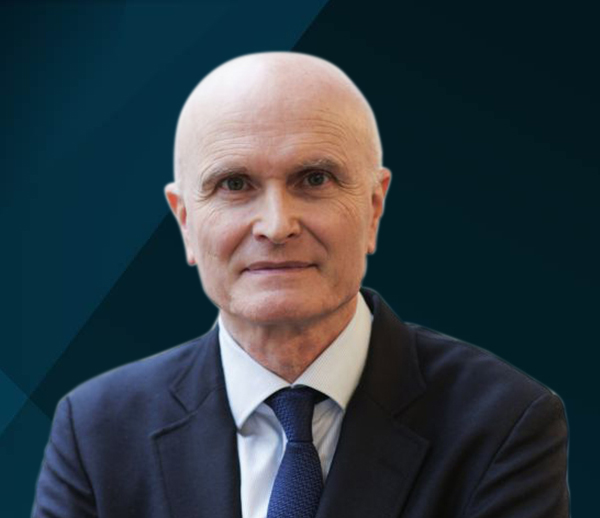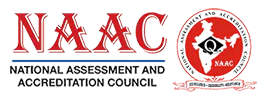
Prof. Dr. Axel R Pries
Advisor
Nims University, Jaipur Rajasthan
Axel Radlach Pries studied medicine at the University of Cologne. In 1979 Pries passed his medical examination at the University of Cologne in Germany. In the following year, he received his doctoral degree (summa cum laude). Until 1985, he worked as a Postdoctoral Fellow at the University of Cologne and then moved to the Institute of Physiology of the Freie Universität Berlin (FU). In 1990, Pries finished his habilitation at the Medical Faculty of Freie Universität Berlin and became Associate Professor at the Department of Physiology in 1995. From 1997 to 1998 Axel Pries was employed as Senior Physician for Anaesthesiology at the German Heart Center Berlin (DHZB). In 1998 he became a Full Professor at the Institute for Physiology of the Freie Universität Berlin; from 2001 to 2015 he was Head of the Institute for Physiology of the Charité-Universitätsmedizin Berlin. His major research field include blood rheology, microcirculation, microvascular network analysis, endothelial function, microvascular adaptation and angiogenesis.
Pries was Vice Director at the Centre for Preclinical Medicine of Charité (2008-2015) and Vice Director at the Centre for Cardiovascular Research, CCR, Charité (2009-2013). For thirty years he was also a consultant for NIH grants at the University of Arizona, Tucson with Tim Secomb (1984- 2014) which involved yearly visits of approx. one month.
From 2015 to 2022 he was Dean and member of the Executive Board of Charité - Universitätsmedizin Berlin. 2003-2015, Prof. Pries was Board Member of the Faculty. From 2018- 2020 he served as interim CEO and member of the board of the Berlin Institute of Health (BIH) and in parallel as President of the Biomedical Alliance in Europe. With the beginning of the year 2021, he became President of the World Health Summit. Since 2023 he is also Pro Rector of the Danube Private University in Krems / Austria.
Education, Professional Career
- 1979 Medical examination, University of Cologne
- 2/1980 Doctoral degree (Dr. med., summa cum laude)
- 1980 Postdoctoral Fellow, University of Cologne
- 1985 Research Assistant (C1), Dept. of Physiology, FU
- 7/1990 Habilitation, Medical Faculty, Freie Universität Berlin (FU)
- 1991 Lecturer of Physiology (C2), Dept. of Physiology, FU
- 1995 Associate Professor, Dept. of Physiology, FU
- 1997-1998 Senior Physician, Anaesthesiology, German Heart Centre Berlin (DHZB)
- 12/1998 Full Professor, Dept. of Physiology, FU
- 1984-2014 University of Arizona, Tucson, Consultant for NIH grants with Tim Secomb, (yearly stays of one month at UofA).
- 2001-2015 Head, Institute of Physiology, Charité - Universitätsmedizin Berlin
- 2003-2015 Board Member, Faculty of Medicine, Charité - Universitätsmedizin Berlin 2008-2015 Vice Director, Centre for Preclinical Medicine, Charité
- 2009-2013 Vice Director, Centre for Cardiovascular Research, CCR, Charité 2015-2022 Dean, Charité - Universitätsmedizin Berlin
- 2018-2020 CEO (interim), Berlin Institute of Health (BIH) 2018-2019 President, Biomedical Alliance in Europe 2021-present President, World Health Summit
- 2023-present Pro Rector, Danube Private University
Honours, Awards, Fellowships
- 1980 Thesis Award “Hochhausstiftung”, University of Cologne
- 1986 Abbott Microcirculation Award, European Society for Microcirculation
- 1995 Lafon Hemorheology-Microcirculation Award, International Society for
Clinical Haemorheology
- 2000 Fellow, European Society of Cardiology
- 2008 Visiting Fellowship, Isaac Newton Institute for Mathematical Sciences,
Cambridge/UK
- 2008 Award of the Asian Union for Microcirculation
- 2011 Malpighi Award, European Society for Microcirculation
- 2015 William Harvey Basic Science Lecture and Silver Medal, European Society of
- 2015 Cardiology (ESC)
Kitanomaru Award, 10th World Conf. for Microcirculation, Kyoto, Japan
- 2018 Poiseuille Gold Medal, International Society of Biorheology
Professional Activities
Editorial boards
Cardiovascular Research (associate editor 2012-2018)
Journal of Vascular Research; Microcirculation; Pflügers Archive European Journal of Physiology; Biorheology; PLoS Computational Biology; The Keio Journal of Medicine, Journal of Cardiovascular Medicine; Frontiers in Vascular Physiology, Frontiers in Computational Physiology and Medicine; Bulletin of the Portuguese Society of Hemorheology and Microcirculation
Leading Functions in Scientific Societies
European Society of Cardiology (ESC)
- Congress Programme Committee
Basic Science Coordinator 2005-2010; 2012-2014
- Council on Basic Cardiovascular Science (CBCS)
Nucleus 2004-2016
Chair 2010-2012
Frontiers of Cardiovascular Biology (FCVB), Chairperson 2010
- Working Group on Coronary Pathophysiology and Microcirculation
Nucleus 1994-2002; 2007-2012; 2014-2018
Chair 1998-2000
- CardioScape
Scientific Committee 2012-2014
Chair 2015-2022
European affairs committee 2014-2016
Advocacy committee 2016-2021
- Alliance for Biomedical Research in Europe
Member of the Board of Directors 2016-2021
President 2018-2019
- International Union of Physiological Societies (IUPS)
Commission on Microcirculation and Capillary Transport
Physiome and Bioengineering Committee 2004-2010
- European Society for Microcirculation (ESM)
Strategy committee 1995-1998; 2011-2015
General Secretary 1998-2011
- International Liaison Committee for Microcirculation (ILCM)
Member 2000-2006; 2015-2020
Chair 2006-2015
- German Society for Microcirculation and Vascular Biology
Board 1990-1994; 2011-2015
General Secretary 1996-2011
- Organization
Conferences (president, co-president and organization) 6
Symposia (organizer) > 48
Member of international scientific program committees > 40
Major Research fields
Blood rheology, Microcirculation, Organ perfusion, Endothelial function, Endothelial surface, Vascular adaptation, Angiogenesis, Tumour microcirculation
Cooperation (selected)
Mark Dewhirst, Duke University, Durham, USA; David Boas, Havard University, Cambridge, USA; Klaus Ley, LIAI, San Diego, USA; Tim Secomb, University of Arizona, Tucson, USA; Saul Yedgar, Hebrew University, Jerusalem, Israel; Valentin Djonov, University of Bern, Switzerland; Ferdi le Noble: KIT Karlsruhe, Germany.
Selected Major Publications (h-Index: 60, Citations > 15.500; Web of Science)
- Coalescent angiogenesis- evidence for a novel concept of vascular network maturation. Nitzsche B, Rong WW, Goede A, Hoffmann B, Scarpa F, Kuebler WM, Secomb TW, Pries AR. Angiogenesis. 2022 Feb;25(1):35-45.
- Coronary microcirculatory pathophysiology: can we afford it to remain a black box? Pries AR and Reglin B. European Heart Journal 2017 Feb 14;38(7): 478–488.
- Coronary vascular regulation, remodelling, and collateralization: mechanisms and clinical implications on behalf of the working group on coronary pathophysiology and microcirculation. Pries AR, et al. European Heart Journal 2015; 36(45): 3134–3146.
- Making microvascular networks work: angiogenesis, remodeling, and pruning. Pries AR and Secomb TW. Physiology (Bethesda) 2014; 29(6): 446–455.
- Metabolic control of microvascular networks: oxygen sensing and beyond. Reglin B and Pries AR. J Vasc Res 2014; 51(5): 376–392.
- Presentation, management, and outcomes of ischaemic heart disease in women. Vaccarino V, Badimon L, Corti R, de Wit C, Dorobantu M, Manfrini O, Koller A, Pries A, Cenko E, Bugiardini R. Nature Rev Cardiol 2013; 10(9): 508–518.
- Angiogenesis: an adaptive dynamic biological patterning problem. Secomb TW, Alberding JP, Hsu R, Dewhirst MW, Pries AR. PLoS Comput Biol 2013; 9(3): e1002983.
- Precapillary oxygenation contributes relevantly to gas exchange in the intact lung. Tabuchi A, Styp- Rekowska B, Slutsky AS, Wagner PD, Pries AR*, Kuebler WM* (*these authors share senior authorship). Am J Respir Crit Care Med 2013; 188(4): 474–481.
- Excessive erythrocytosis compromises the blood-endothelium interface in erythropoietin- overexpressing mice. Richter V, Savery MD, Gassmann M, Baum O, Damiano ER, Pries AR. J Physiol 2011; 589(21): 5181–5192.
- Pulsatile shear and Gja5 modulate arterial identity and remodeling events during flow-driven arteriogenesis. Buschmann I*, Pries A*, Styp-Rekowska B et al. (*these authors contributed equally). Development 2010; 137(13): 2187–2196.
- The shunt problem: control of functional shunting in normal and tumour vasculature. Pries AR, Hopfner M, Le Noble F, Dewhirst MW, Secomb TW. Nature Rev Cancer 2010; 10(8): 587–593.
- Origins of heterogeneity in tissue perfusion and metabolism. Pries AR and Secomb TW. Cardiovasc Res 2009; 81(2): 328–335.
- Blood flow in microvascular networks. Pries AR and Secomb TW. In: Handbook of Physiology: Microcirculation, edited by Tuma RF, Durán WN and Ley K., Elsevier, 2008, Chap 1, 3–36.
- Remodeling of blood vessels: responses of diameter and wall thickness to hemodynamic and metabolic stimuli. Pries AR, Reglin B, Secomb TW. Hypertension 2005; 46(4): 726–731.
- The endothelial surface layer. Pries AR, Secomb TW, Gaehtgens P. Pflugers Arch 2000; 440(5): 653– 666.
- Design principles of vascular beds. Pries AR, Secomb TW, Gaehtgens P. Circ Res 1995; 77(5): 1017– 1023. 3
- Resistance to blood flow in microvessels in vivo. Pries AR, Secomb TW, Gessner T, Sperandio MB, Gross JF, Gaehtgens P. Circ Res 1994; 75(5): 904–915
Contribution to Science
Microrheology We determined microrheological properties of blood in vitro and in the microcirculation in vivo. Adressed areas included the Fahraeus Effect, the Fahraeus-Lindqvist-Effect and the phase separation at branch points. Based on extensive experimental data including the respective literature, we established parametric descriptions for these central microrheological phenomena which are widely used as references in the respective literature. The comparison of in vitro and in vivo analyses led to the conclusion that a thick layer on the endothelial surface contributes to flow resistance in living vessels.
Microvascular network analysis
For larger microvascular networks observed in the rat mesentery we established a comprehensive analysis of topology, morphology and hemodynamics. To allow this analysis, we established experimental approaches to record microvascular morphology in large networks and to measure relevant functional parameters, including flow velocity and hematocrit. This was complemented by mathematical simulation approaches which allowed the estimation of pertinent parameters including those which can not be measured easily (e.g. intravascular pressure) for all vessel segments. Central findings included the heterogeneity and correlation of relevant microvascular parameters.
Endothelial function
Starting from the observed inconsistency between in vitro and in vivo flow resistance we developed the concept of a thick endothelial surface layer. In addition, the gene regulation in endothelial cells was studied.
Microvascular adaptation
Using data experimental data for microvascular networks with a mathematical simulation, we established the first integrative concept for the biological regulation of vascular diameter and wall thickness adaptation by locally available metabolic and hemodynamic signals. A central finding was the assessment of the crucial role of information transfer along the vessel wall. Defects in this mechanism lead to functional shunting and may be involved in the generation of the specific properties of tumour vascular networks.
Angiogenesis
Recently, we extended our approach combining experimental measurements with mathematical simulations to the study of angiogenesis and the generation of functional microvascular networks. These studies show that sprouting angiogenesis can not be effective without a nearly parallel vascular adaptation and pruning. Based on prolonged observation if vascular development in the chorion allantois membrane (CAM) of the chick embryo we proposed a novel angiogenetic mode termed ‘coalsecent angiogenesis’.



